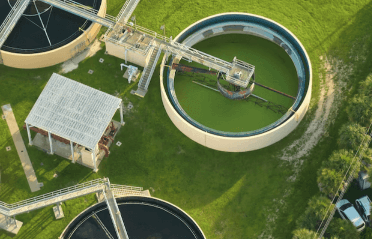Question
a.
Q = t₁ – t₂/ (r₂ – r₁)/4πk₁r₁r₂ + (r3 – r2 )/4πk₂r₂r₃
b.
Q = t₁ – t₂/ (r₂ – r₁)/4πk₁r₁r₂ + (r3 – r2 )/4πk₂r₂r₃
c.
Q = t₁ – t₂/ (r₂ – r₁)/4πk₁r₁r₂ + (r3 – r2 )/4πk₂r₂r₃
d.
Q = t₁ – t₂/ (r₂ – r₁)/4πk₁r₁r₂ + (r3 – r2 )/4πk₂r₂r₃
Posted under Heat Transfer
Interact with the Community - Share Your Thoughts
Uncertain About the Answer? Seek Clarification Here.
Understand the Explanation? Include it Here.
Q. The rate of conduction heat flow in case of a composite sphere is given by
Similar Questions
Explore Relevant Multiple Choice Questions (MCQs)
Q. The thermal resistance for heat conduction through a hollow sphere of inner radius r1 and outer radius r2 is
View solution
Q. A spherical vessel of 0.5 m outside diameter is insulated with 0.2 m thickness of insulation of thermal conductivity 0.04 W/m degree. The surface temperature of the vessel is – 195 degree Celsius and outside air is at 10 degree Celsius. Determine heat flow per m² based on inside area
View solution
Q. The quantity d t/Q for conduction of heat through a body i.e. spherical in shape is
View solution
Q. A spherical vessel of 0.5 m outside diameter is insulated with 0.2 m thickness of insulation of thermal conductivity 0.04 W/m degree. The surface temperature of the vessel is – 195 degree Celsius and outside air is at 10 degree Celsius. Determine heat flow
View solution
Q. If we increase the thickness of insulation of a circular rod, heat loss to surrounding due to
View solution
Q. The following data pertains to a hollow cylinder and a hollow sphere made of same material and having the same temperature drop over the wall thickness
Inside radius = 0.1 m and outside surface area = 1 square meter
If the outside radius for both the geometrics is same, calculate the ratio of heat flow in the cylinder to that of sphere?
View solution
Q. “All the factors relating to geometry of the sections are grouped together into a multiple constant called the shape factor” True or false
View solution
Q. Shape factor for plane wall is equal to
View solution
Q. For a prescribed temperature difference, bodies with the same shape factor will allow heat conduction proportional to
View solution
Q. Shape factor for cylinder is
View solution
Q. The annealing furnace for continuous bar stock is open at the ends and has interior dimensions of 0.6 m * 0.6 m * 1.5 m long with a wall 0.3 m thick all around. Calculate the shape factor for the furnace?
View solution
Q. Shape factor for sphere is
View solution
Q. Which is true regarding a complete rectangular furnace?
View solution
Q. The shape factor for complete rectangular furnace is
Where a, b and c are the inside dimensions and d x is the wall thickness
View solution
Q. For the same material and same temperature difference, the heat flow in terms of shape factor is given by
View solution
Q. For the same amount of fabrication material and same inside capacity, the heat loss is lowest in
View solution
Q. With variable thermal conductivity, Fourier law of heat conduction through a plane wall can be expressed as
View solution
Q. The inner and outer surfaces of a furnace wall, 25 cm thick, are at 300 degree Celsius and 30 degree Celsius. Here thermal conductivity is given by the relation
K = (1.45 + 0.5 * 10¯⁵ t²) KJ/m hr deg
Where, t is the temperature in degree centigrade. Calculate the heat loss per square meter of the wall surface area?
View solution
Q. A plane wall of thickness δ has its surfaces maintained at temperatures T₁ and T₂. The wall is made of a material whose thermal conductivity varies with temperature according to the relation k = k₀ T². Find the expression to work out the steady state heat conduction through the wall?
View solution
Q. The mean thermal conductivity evaluated at the arithmetic mean temperature is represented by
View solution
Recommended Subjects
Are you eager to expand your knowledge beyond Heat Transfer? We've handpicked a range of related categories that you might find intriguing.
Click on the categories below to discover a wealth of MCQs and enrich your understanding of various subjects. Happy exploring!








